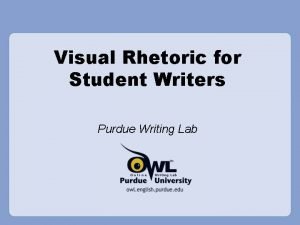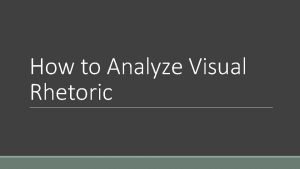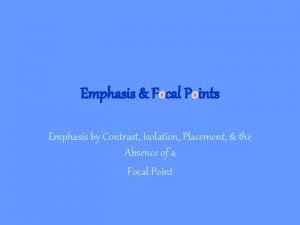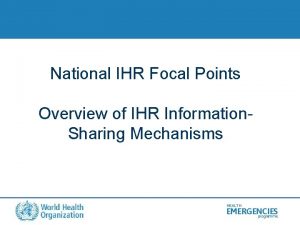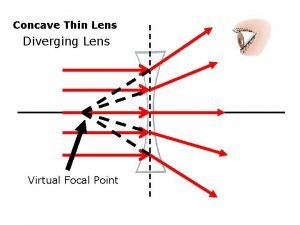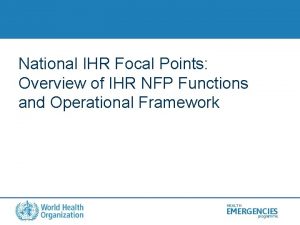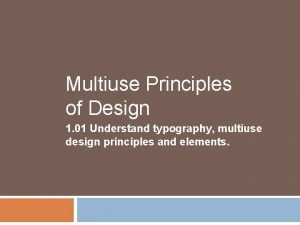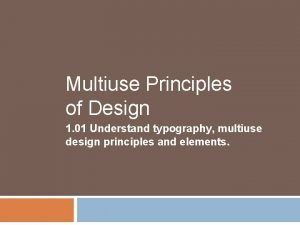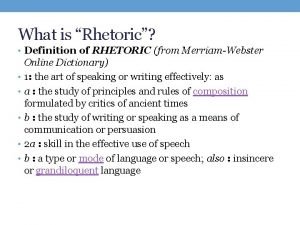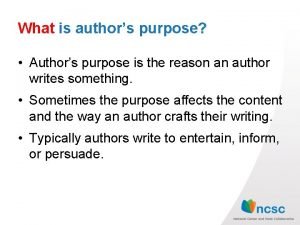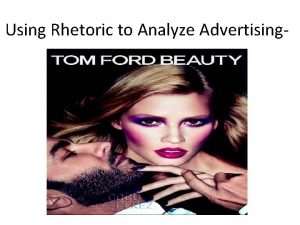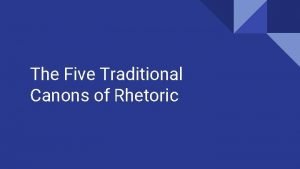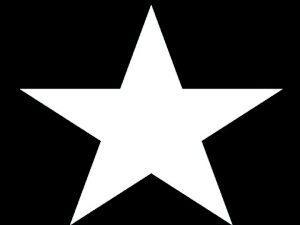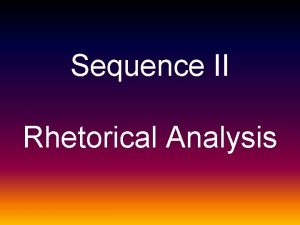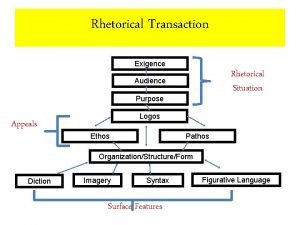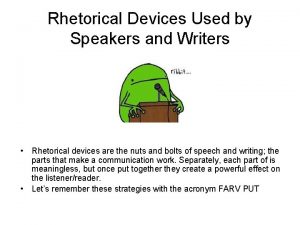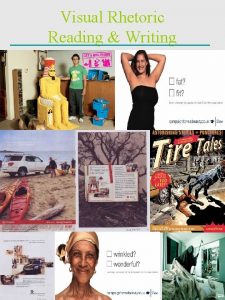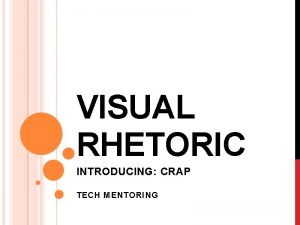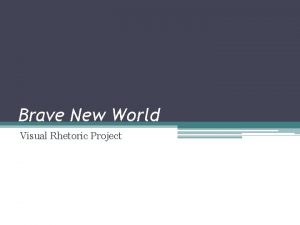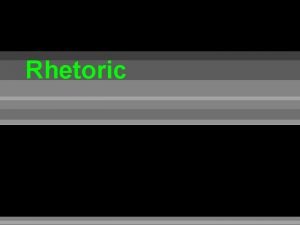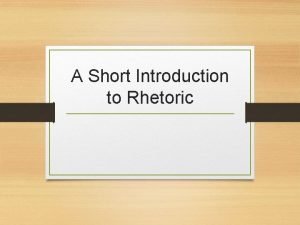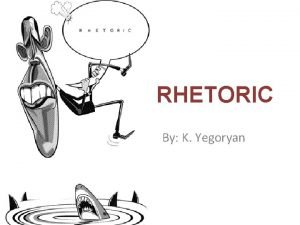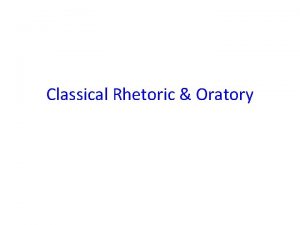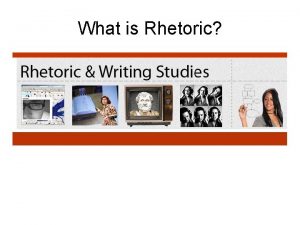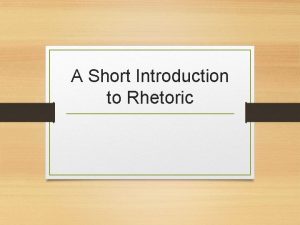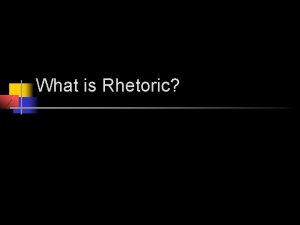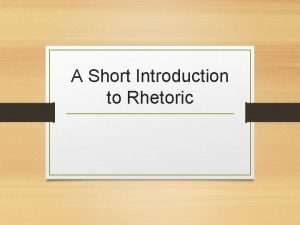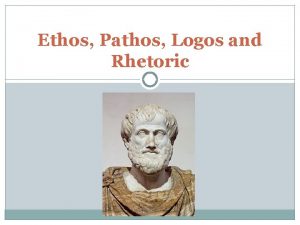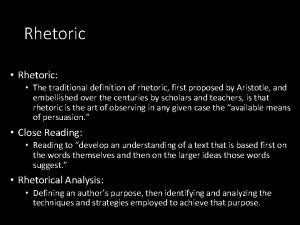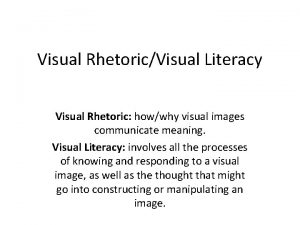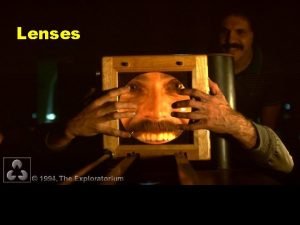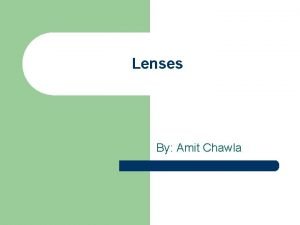How to Analyze Visual Rhetoric 1 Focal point
























- Slides: 24

How to Analyze Visual Rhetoric

1. Focal point & emphasis: The spot where your eyes immediately go when viewing an image. Rhetorically: the central point, the image you want the audience to notice and retain.


2. Figure-Ground Contrast: The difference between what’s in front (the figure) and what’s in back (the ground or background) Often the figure is the focal point. Rhetorically: the active part of the image, not the scene it’s enacted upon.


3. Grouping: Proximity Close objects are perceived as grouped together, and grouping implies a relationship. Rhetorically: we psychologically like to categorize; we imbue things with relationship when they are near each other. (We do this with words or examples as well as with images. )


4. Similarity: We also group by similar traits: size, shape, texture. Rhetorically: again, we want to find relationship.


5. Continuation: Elements that suggest a continued visual line will be grouped together. Rhetorically: even when the relationship is incomplete, we complete it ourselves (like the other half of a metaphor, or the last notes of a song).


6. Color The brighter the color, the more powerful its effects. Rhetorically: We’re just like animals, going for the bright colors. Using them creates greater presence.


7. Line: Horizontal lines create calm and equilibrium, vertical lines suggest movement, diagonal lines can create stress, wavy lines imply softness or grace. Rhetorically: lines are a shortcut to pathos for you the rhetor.





8. Context: ◦ “The more you know, the more you see. ” ◦ Aldous Huxley ◦ The information around the photo—how your personal, historical, technical, cultural background affects your viewing, and how it affected the artist’s. ◦ Rhetorically: more context means more power for the image. It explains the image to audience.


9. Narration Does the image as a whole tell a story? Rhetorically: a story is one of the most powerful ways an image can contribute to your message.


Visual Analysis The Whole Composition: ◦ What do you feel as you view the image? ◦ Where does your eye go & why? ◦ How do the key elements contribute to how you see/feel? (focal point, figure-ground contrast) ◦ The rest of the internal categories—how do they make you feel? (proximity, similarity, continuation, color, line) ◦ Is there a story embedded in the image? (narration) ◦ What more can you know about the image? (context)

 You eat what you touch
You eat what you touch Purdue writing lab
Purdue writing lab Analyzing visual rhetoric
Analyzing visual rhetoric Focal point
Focal point The inner terminus of a fingerprint
The inner terminus of a fingerprint Focal point emphasis
Focal point emphasis National ihr focal point
National ihr focal point Nearsighted diverging lens
Nearsighted diverging lens Where is the focal point in a triangular arrangement?
Where is the focal point in a triangular arrangement? Types of dining
Types of dining Beach ball geology
Beach ball geology Thomas schelling focal point
Thomas schelling focal point Focal point poe
Focal point poe The first element the eye sees; the focal point
The first element the eye sees; the focal point The first element the eye sees; the focal point
The first element the eye sees; the focal point Triangular arrangement
Triangular arrangement Rhetoric definition
Rhetoric definition An author's purpose in using rhetoric is to
An author's purpose in using rhetoric is to What is rhetoric
What is rhetoric 3 types of rhetoric
3 types of rhetoric Canons of rhetoric
Canons of rhetoric Pathos ethos logos
Pathos ethos logos Rhetorical stance
Rhetorical stance Exigence in literature
Exigence in literature Tricolon literary device
Tricolon literary device

